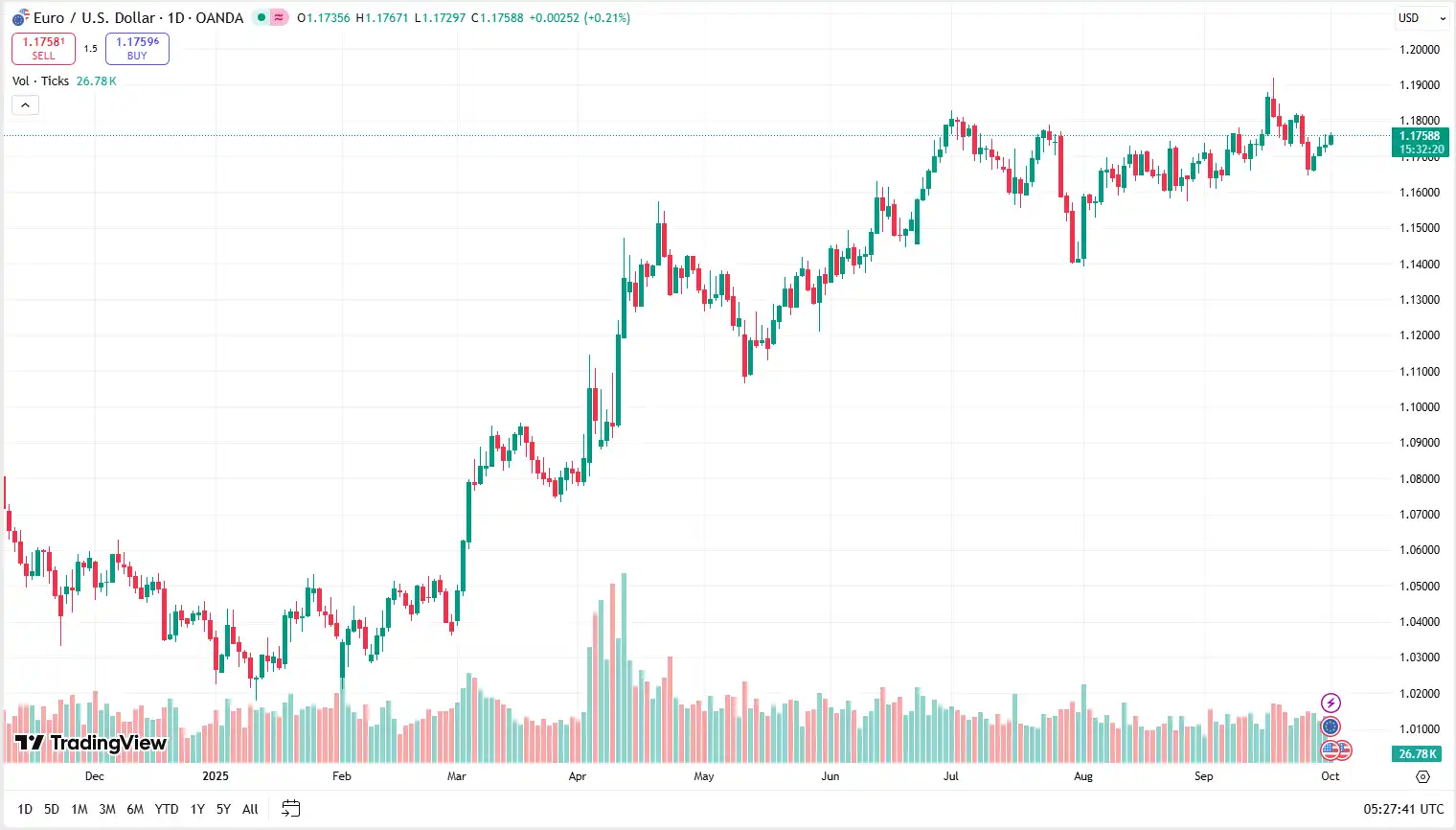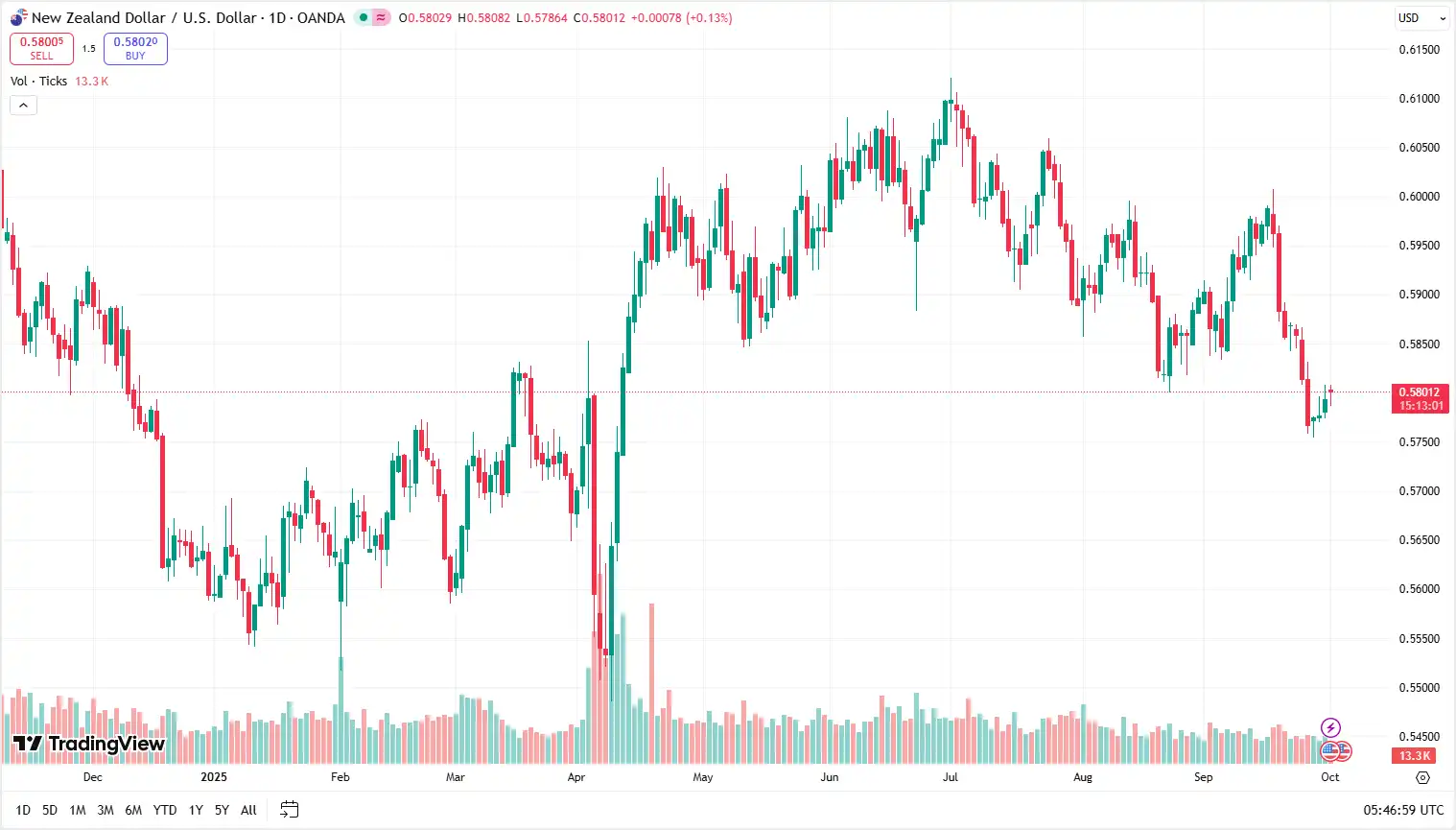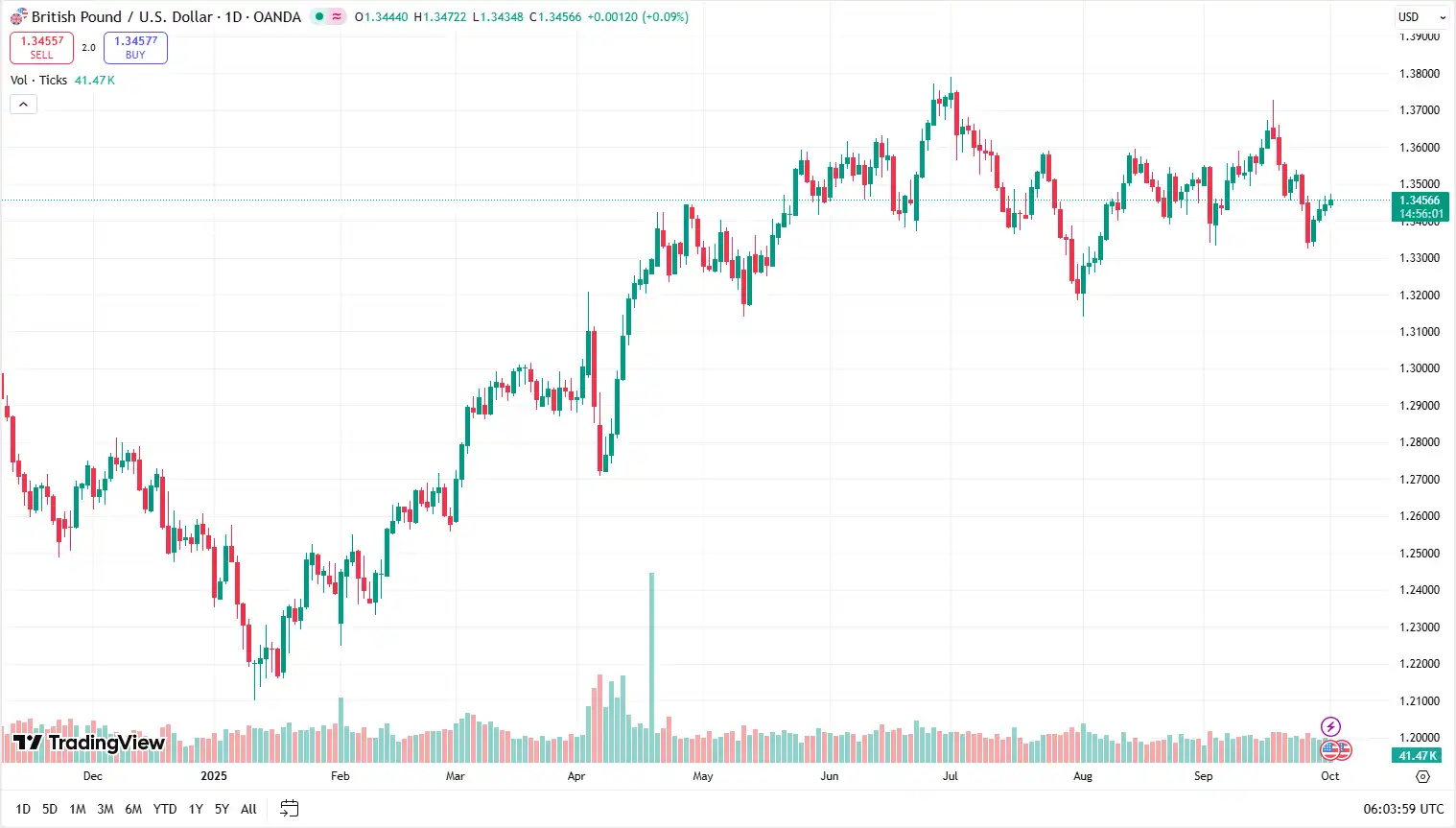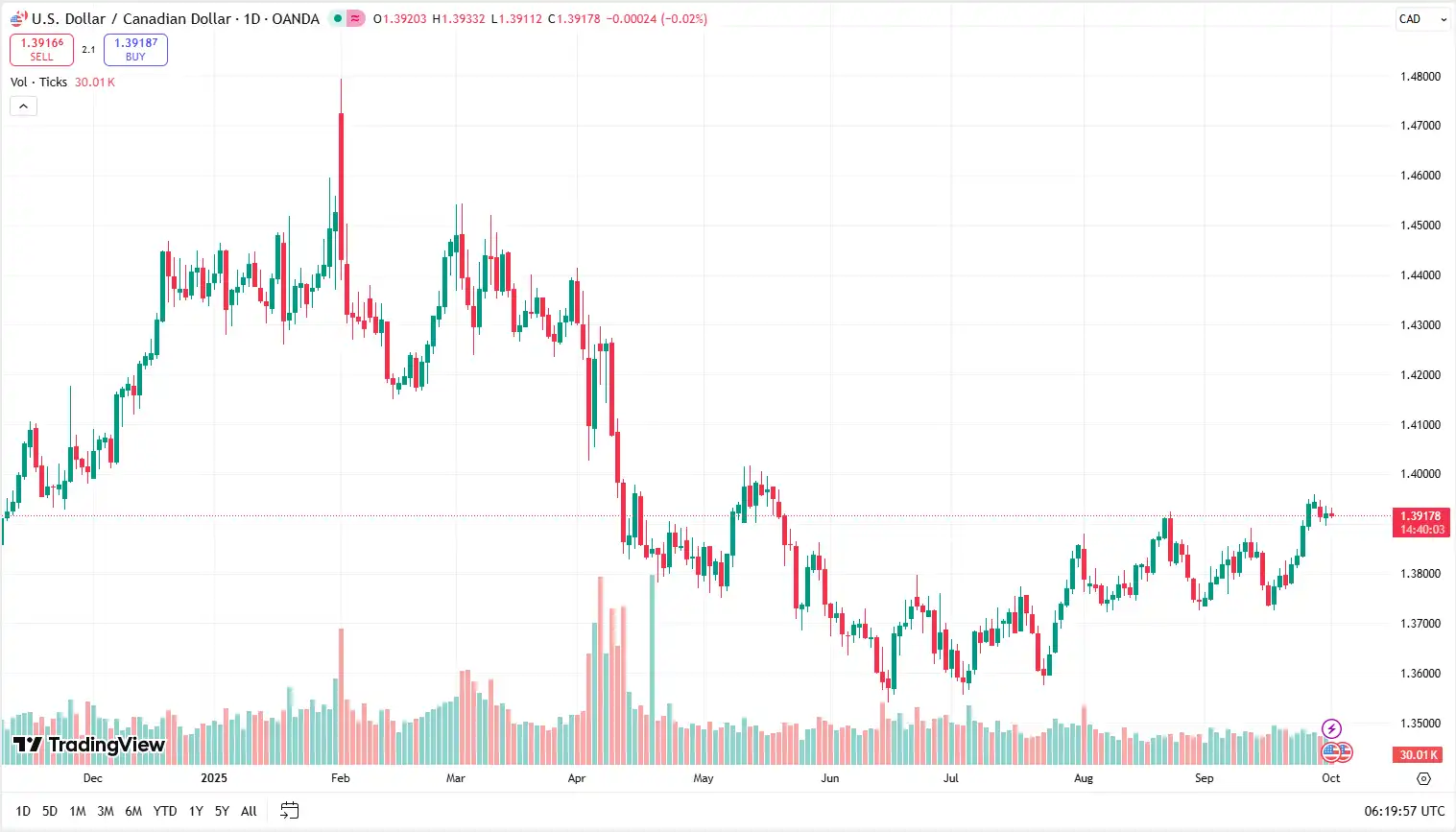The EUR/USD pair traded with limited movement around 1.1730[1] level in Wednesday’s Asian session, consolidating after three consecutive days of gains. It is believed that the recent advance has been supported by softer U.S. labour market data, which has weighed on the US dollar and bolstered expectations for further Federal Reserve (Fed)[2] policy easing.
Analysts[3] indicate that market participants are closely watching the upcoming release of the preliminary Eurozone Harmonized Index of Consumer Prices (HICP). Headline inflation[4] is projected to accelerate slightly to 2.2% year-over-year in September, up from 2.0% in August, while core HICP is expected to remain steady at 2.3%. Analysts indicate that any upside surprise could lend short-term support to the euro, as it would signal persistent price pressures despite weak growth momentum.
Market reports[5] point out that across the Atlantic, political uncertainty adds to USD headwinds as the US government may face a potential shutdown with funding set to lapse. Market commentators[6] point out that a shutdown would delay key economic data releases, including Friday’s widely monitored nonfarm payrolls report. Analysts indicate that the absence of fresh labour data could leave the Fed reliant on already deteriorating indicators when considering upcoming policy decisions.
Market reports[7] note that the US labour market data highlight a cooling trend, with August job openings rising modestly but the hiring rate slipping to 3.2%, its weakest since June 2024. This has bolstered expectations for Fed rate cuts, with markets pricing a near-97% chance in October and scope for another in December. Market commentators[8] point out that EUR/USD remains supported amid fragile dollar sentiment, with a stronger Eurozone inflation print potentially fuelling gains towards 1.1760–1.1780, though medium-term risks from weak growth and ECB dovishness persist.

NZD/USD Consolidates as US Risks Weigh
The NZD/USD pair slipped slightly against the US dollar and traded near 0.5790[9] in Wednesday's Asian trading hours. It is believed that the pair is consolidating after registering modest gains in the prior session, with sentiment weighed by both domestic and US developments[10]. On the domestic front, the seasonally adjusted New Zealand’s Building Permits data[11] indicate that in August, the data rose by 5.8% after increasing by 5.3% in July that was revised upward. As the housing sector is resilient, the data did not give an important upside momentum to the Kiwi since more important risk sentiment and external drivers still prevail.
Market commentators[12] indicate that in the United States, the threat of an imminent federal government shutdown has slowed the demand of the greenback. As federal funding runs out soon, 750,000 federal workers are potentially put on furlough unless temporary spending bills become law. Several major data[13] releases, including the all-important Nonfarm Payrolls (NFP) report due Friday, would be stopped, making the US labour market less visible. The Labour Department already threatened to suspend its statistics agency during the disruption.
Meanwhile, the anticipation of Fed[14] easing has curtailed the power of the US currency. The latter has been supported by recent softening in labour market data, notably the Job Openings report[15], which indicated that vacancies increased only slightly to 7.23 million in August but the rate of hiring declined to the lowest point since the middle of the year. CME FedWatch Tool[16] shows that now the markets are pricing a 97% chance of a rate cut in October, and a 76% possibility of December.
On the technical side, NZD/USD[17] is just above the support at 0.5770 and the resistance is around 0.5830-5850. The short-term negative risks are insulated by the Fed rate cut[18] expectations, and a subedited US dollar environment, but political instability in Washington has the potential to add volatility. Market commentators[19] anticipate that in the future, traders will be keen on the US data releases and any disruption caused by a possible shutdown will add to the medium term prognosis of the two.

GBP/USD Extends Gains Amid Dollar Weakness Pressure
The GBP/USD pair continued its upward momentum to trade in Asian trading around 1.3460[20] in Wednesday's trading hours, marking its fourth consecutive daily gain. The move is thought to represent the continued pressure on the selling of the US dollar, which has been reeling since the weaker labour market signs that increased anticipation of immediate Federal Reserve (Fed)[21] policy easing.
Market commentators[22] note that recent US job market figures have strengthened the belief that the conditions are slowing down. In August, Job Openings[23] had risen by a little to 7.23 million versus 7.21 million but the rate of hiring had dropped to 3.2%, its lowest since June 2024. Added to the modest layoffs, the data point to a decelerating but not crumbling labour market. The CME FedWatch Tool[24] indicates that markets are already pricing in a 97% likelihood of a Fed rate cut in October and a 76% chance of one more in December, and heavily burdened the greenback. Market reports[25] indicate that additional uncertainty is created by the US government shutdown that has induced furloughs to approximately 750,000 federal employees. Notably, the Labour Department has threatened to halt its major releases, among them the September jobs report, in case the shutdown[26] continues, and traders have been left to have recourse to privately-gathered data, including today’s ADP Employment Change and the ISM Manufacturing PMI.
Market commentators[27] point out that the British pound has been strengthened by optimistic domestic fundamentals. Fresh UK GDP data[28] indicates that the economy grew 1.4% YoY in Q2 compared to a preliminary 1.2% and quarterly growth was also stable at 0.3%. These figures provided a breather to Sterling. The medium-term picture is, however, ambivalent. Recently, Bank of England (BoE) Deputy Governor Dave Ramsden[29] hinted that we might see a reduction in rates justified by decelerating labour market influences and a reduction in the pressure of inflation. Such dovish biasness might limit the upward trend of Sterling as soon as the Fed-led dollar weaknesses are overcome.
Analysts[30] expect that the GBP/USD pair could be held afloat in the near term by hopes of Fed easing and residual US political risks, and the immediate resistance would be around the 1.3500 handle. But the medium-term risks are biased towards further straining on Sterling as UK labour weaknesses escalate and the BoE shifts to rate reductions. The traders are focused on the forthcoming US ADP employment data[31] and the ISM PMI data as they give new direction, because the official government reports are not available. The GBP/USD exchange rate remains in focus for near-term direction.

USD/CAD Holds Firm Amid Oil Weakness, Policy Divergence
The USD/CAD pair extended its sideways consolidative price move for the second straight day and traded above the 1.3900[32] in Wednesday's Asian session. The pair is thought to be strong at the higher levels as it indicates a market environment that remains skewed towards US dollar bulls, although the gains are limited by the widespread US dollar weakness[33].
Essentially, declining crude oil[34] prices that are near multi-month lows continue to put pressure on the Canadian dollar. The commodity-linked Loonie is weak due to the lack of consistent demand for oil as markets assess the possibility of an increase in OPEC+ output. At the same time, the Canadian dollar[35] sentiment is further weakened by forecasts that the Bank of Canada (BoC) may keep loosening policy to spur growth. Recent remarks by Governor Tiff Macklem[36] reinforced the prospect of further rate cuts by highlighting the significance of achieving a balance between growth and inflation control.
Meanwhile, the markets anticipate two rate cuts from the US Federal Reserve (Fed)[37] later this year. Despite favourable rate differentials, political uncertainty surrounding a potential US government shutdown put more pressure on the US dollar and limited USD/CAD's upward momentum.
Upcoming US economic releases[38], particularly the ISM Manufacturing PMI and the ADP private-sector employment report, are the focus of interest. Analysts indicate that unexpectedly weaker data could impact the US dollar and momentarily delay the USD/CAD positive trend. Stronger data, on the other hand, would maintain the pair's short-term support above 1.3900[39].

Stay Ahead in the Currency Game
Whether you're a daily FX trader or handle international transactions regularly, our 'Currency Pulse' newsletter delivers the news you need to make more informed decisions. Receive concise updates and in-depth insights directly in your LinkedIn feed.
Subscribe to 'Currency Pulse' now and never miss a beat in the currency markets!
Ready to act on today’s insights? Get a free quote or give us a call on: +44 (0)20 7740 0000 to connect with a dedicated portfolio manager for tailored support.
Important Disclaimer: This blog is for informational purposes only and should not be considered financial advice. Currency Solutions does not take into account the investment objectives, financial situation, or specific needs of any individual readers. We do not endorse or recommend any specific financial strategies, products, or services mentioned in this content. All information is provided “as is” without any representations or warranties, express or implied, regarding its accuracy, completeness, or timeliness.




